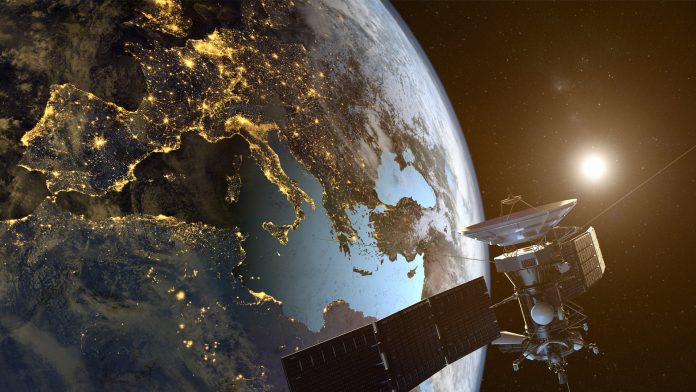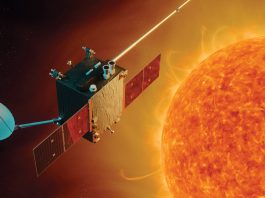ESA Director-General Jan Wörner speaks to TIP about space debris and ESAs plans for removal, as well as about Space19+ and the contentious issue of defence.
On the 12 January 2020, The Innovation Platform (TIP) attended the 12th European Space Conference: ‘New Decade, Global Ambitions: Growth, Climate, Security & Defence’. The conference provided a key platform to take stock of what has been done, to delve into the future of European space policy, its programmes and missions, and to address the 10 key issues of this decade: Horizon 2030, the EU Industrial Strategy, saving our planet, space and defence, international co-operation, partnerships for the future, technological autonomy, security in space, the future of connectivity, and a possible paradigm shift.
At the conference, European Space Agency (ESA) Director-General, Jan Wörner, featured as a guest speaker on ‘Building Bridges: Giving new meaning to International Space Cooperation in the new decade”.
Alongside other journalists, TIP speaks to Wörner about how ESA is planning to tackle space debris, the success of Space19+, and ESAs collaboration with the Federal Defence Agency.
What are your thoughts on the considerable amount of additional satellites that are going to be launched in the coming years and the potential problems in regards to space debris? Is there a need for regulation?
I don’t think there is a need for regulation, no. People should be able to use their morals and their common sense. We don’t need regulations to force people to cross the street when there is a red light; they don’t do it because they know it is dangerous.
For satellites in the future, my vision is for there to be at least one of three options:
- The system has an automatic redundant deorbiting system. When the satellite ceases to function, this redundant system automatically safely deorbits it (or if the redundant system fails, the main system deorbits the satellite);
- The company launching a satellite has a contract with a company who will, at the end of the satellites lifetime, bring it down; or
- The company gives a financial deposit to an entity such as ESA or NASA so that if the satellite does not deorbit then they can use these funds to do it for them.
In an ideal world, this agreement would exist globally. However, in terms of the constellations of satellites which are set to be launched soon, this is not likely because they already have an operating system on board which is more or less redundant. Therefore, I’m not waiting until we have regulation; I’m proposing that this happens now.
Can you tell us about the call for industry to come in with solutions?
At the beginning of 2018, we made a call and we handed out a list of ESA owned assets in space. We asked industry to select something and propose how they would bring it down. The only restrictions were that they had to select assets which would not deorbit themselves in the next five years. They also had to select something that was of a considerable size.
Many companies put forward proposals, and a Swiss company was finally selected. Normally, we are taking care of geo return by asking the Member States how much money they would like to pay for the project. This time, however, it was the other way around – industry had to look at what countries and companies they wanted to get money from.
The company decided they wanted to deorbit ‘Vespa’ – an adapter between two satellites launched with a Vega system – normally when you launch, you separate the first satellite in orbit. Then, you separate the adapter and then the second satellite. If you have no special measures then the adapters fly more or less at the same height as the satellite, but as this is space debris it is dangerous, and so the proposal wanted to bring down one of these adapters. However, I found a small issue in the proposal: they wanted to go with Vega as a secondary passenger. Meaning that while the mission would deorbit one Vespa, it would add another, meaning that there would be zero gain.
We therefore decided to undertake an additional project from out of that to bring down this adapter by itself, not by grabbing it but by adding a small engine to the Vespa adapter. As a result, it will deorbit by itself.
Moving forwards, this project we will see three big results:
- Space debris removal;
- Space debris avoidance; and
- A new type of procurement by being a customer, instead of an agency or department.
Why didn’t you select Envisat as a target for active space debris removal?
It was on the list but I would be hesitant to choose Envisat as the very first target because you would really have to take care that you deorbit in the right place due to its size. Vespa, in comparison, is very small and so if it will be destroyed by burning in the atmosphere.
Where are you with the Financial Framework Partnership Agreement (FFPA)?
I had a discussion today with some high representative of the European Union in the hopes that they will give a clear mandate so that they can start an FFPA discussion with us. On our side, we have been preparing it for over half a year. It may sound easy to have an agreement, but it is not only about the remuneration of ESA costs; it is about the question of if some contracts are changed, then who has to pay for it and when? That needs to be defined in the FFPA.
We have what we believe would be a good starting point for the sake of the joint European position. We believe that we should take some risks and at the end we should have a balanced approach for the different activities. Our intention is to have one FFPA for all the different activities. It is important to mention that the framework agreement of 2004 between the EU and ESA will not be succeeded by the FFPA, it will remain valid.
As your current mandate as the head of ESA is drawing to an end, do you have a potential successor in mind?
I think it would be nice to have somebody who is young and/or female. However, that would be difficult as it is clear that it is mainly men in the senior positions today. To just look at today’s event: yes, there have been female speakers, but we can name all the women who have spoken today. I doubt we would be able to name all the males as there has been so many more. This shows that we have an issue. However, I am confident that this will change in the future.
It is in the hand of the Member States to decide upon when and who. My current mandate ends in summer 2021.
Would you say Space19+ has been your biggest success during your time at ESA?
I am very happy about the results of Space19+. The money is one thing, but the other thing is that they have confirmed the increase of the mandatory programme. There is also an openness from the ministers for change in ESA.
Regarding successes, though, I am always very happy when astronauts come back successfully from space. For me, to send astronauts into space is always difficult. They love it, and I like it, but I like it more when they come back down safely.
ESA is also deepening its collaboration with the European Defence Agency (EDA). Is there a red line for you when it comes to ESAs involvement in defence?
For me as Director General, yes; although in ESA there are divided opinions: some believe that what we are already doing with EDA is too far, while others believe we should go into more detail. For me, the ‘militarisation of space’ is the key area that ESA should not enter. Personally, I would never support any militarisation of space and all the arguments to secure the assets, etc. are not convincing because destroying in space is easy, but to defend it is nearly impossible.
What I can understand is the use of space for Earth Observation and surveillance, for example. These are both something that I am a little bit more open to. However, as soon as the conversation goes to militarisation, I say no. At ESA we do not support military projects on the surface of the Earth, and therefore the relationship with EDA is more of an exchange and strategic value – we have no concrete projects with them.
Of course, things like Copernicus can be used for both good and for bad – to help the after an earthquake or tsunami; or for surveillance or for exploring areas which can’t be seen from the ground for military purposes. As a result, Earth Observation, navigation and telecommunications have this dual nature. But at ESA we are always looking to the non-military part of it.
Does the UN treaty have to be updated?
Technology has developed so yes, it has to be updated. However, for me personally, regulation and rules are not always the answer. Ethics and a moral compass preventing people from doing bad things should be enough.









